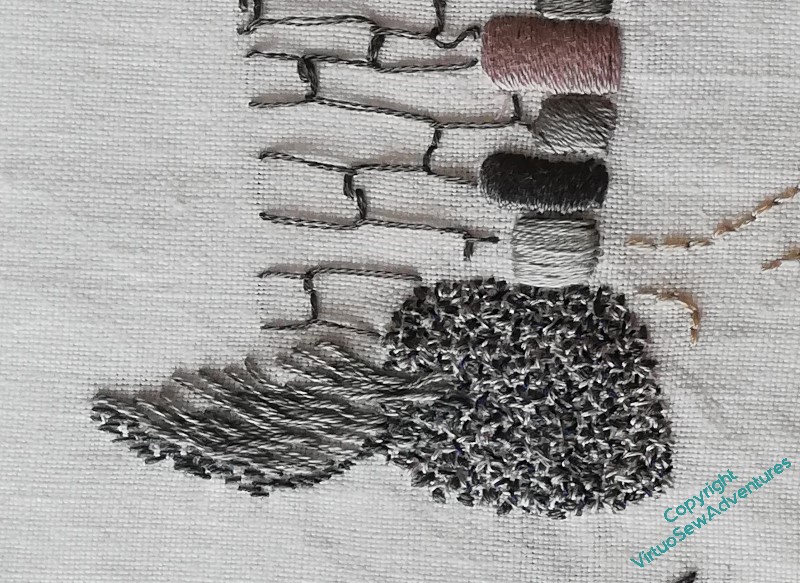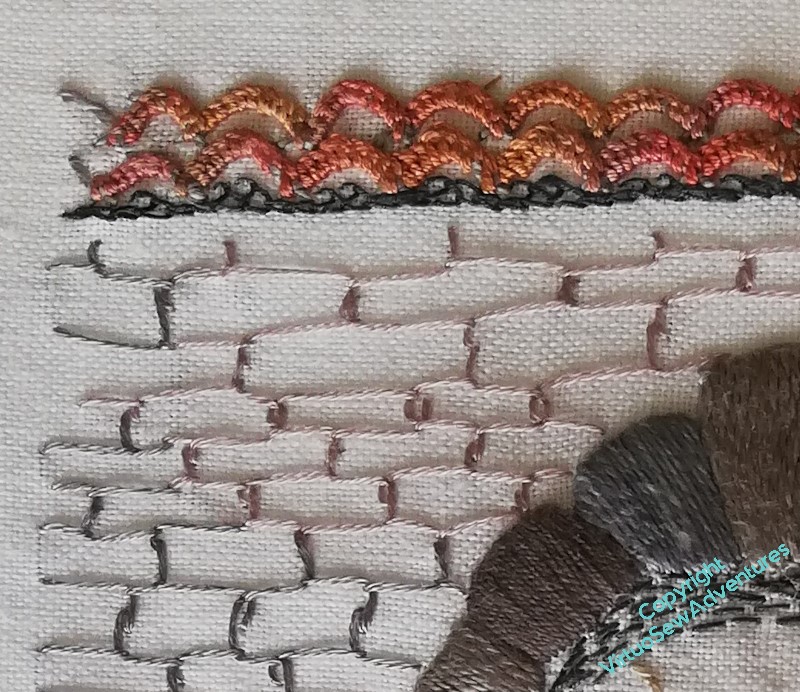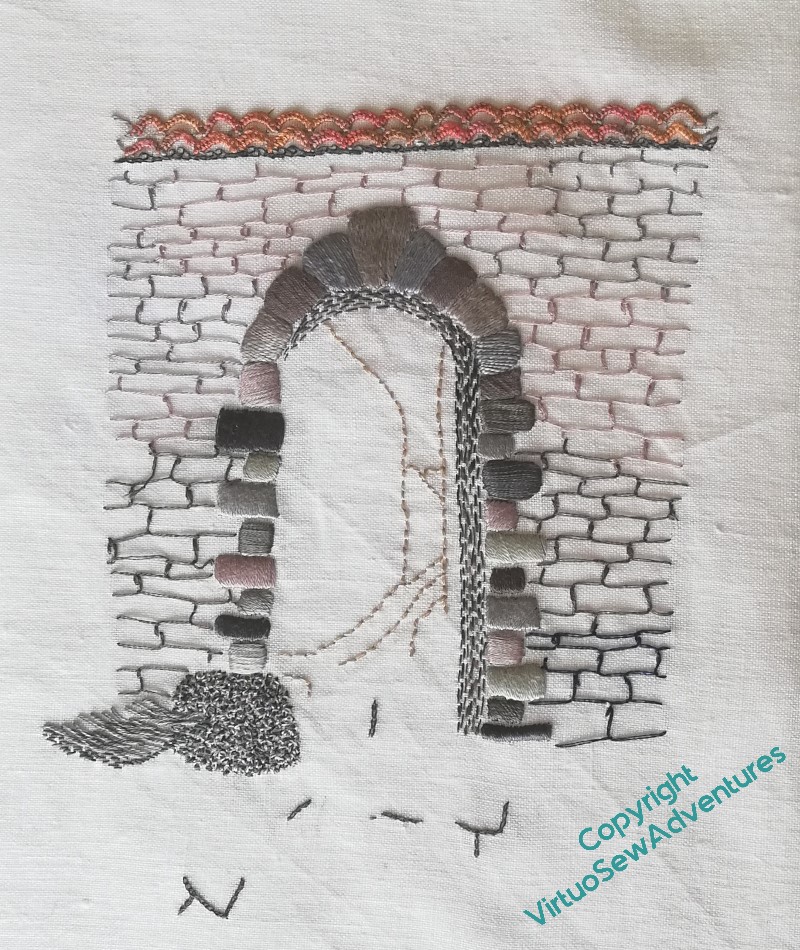Watermill Stitchery – Finishing Stones of Verrucola
You may recall that I was planning to use this design as a way to explore stonework in various forms, and to demonstrate stitches that might be chosen in each case.
So here we have padded satin stitch for the cut and dressed stone of the arch, and seed stitch for the boulder beside it. The seat and the blocks of the wall around the arch are both in Cretan Stitch, the one spaced out and turned into a filling stitch of sorts, and the other compressed and set at a slight angle to represent the slightly dished stone seat.
This view shows the height of the padding on the keystone and the line of dark stitching under the tiles, which is a line of chain stitch feathered on one side only to get one crisp edge and one which suggests the darkness of the arch. You can also see from the shadows just how strongly raised the blanket stitched herringbone stitch appears.
The Cretan Stitch rows are carefully varied in length and depth to show how the rows of cut stone are not all the same height or length. This was a stitch much more easily worked in a hoop, where you can see the layout, than in the hand – even though I prefer working in the hand where I can.
And here is the finished “Stones of Verrucola”.
There are some elements which work much better than others. The outlines through the arch and the chain stitch edges of the flagstones may not be necessary, and the shadow under the seat is a little too small.
The seed stitches could have been bigger, maybe even grouped, and maybe emphasizing one of the lighter colours more, but I am very happy that all of the different textures are truly differentiated.
Besides, all that I am seeking to do is to demonstrate ideas that the students can take on or not as they choose. If at the end of the week I have a classful of mini-mes, I will have failed. What I want is a group who’ve tried, experimented, and each of them produced, maybe even only a fragment, but still something that makes me think, “Goodness, I wish I’d thought of that!”




That is a lovely variety of stitches and as you say, a great starting point for your students to head off on their own explorations. I’m very taken with the Cretan stitch stones – incredibly effective!
Yes, sometimes it is hard to get adult students to experiment. Most children, on the other hand, will just dive in and try everything. This sample should allay some of the adults hesitation.
I actually rather like the outlines through the arch and the edges of the flagstones. The former takes one through the arch and the latter gives one a feeling of approach. ie by adding these elements you have added depth and foreground. Brilliant idea to use Cretan stitch for the wall and I love the oblique reference to Ruskin in the title.
The Cretan stitch of the wall and seat, and the stitches used on the roofline all work really well with the padded satin. I am less enamoured of the seed stitch boulder and the darning stitch under the arch, they seem to lack form. But, as you say, having something that your students might consider doing in a different way, in a safe space, where experiment is actively encouraged, will benefit them – and will keep you interested, too.
I am sure this ‘sampler’ will inspire your students to try mixing stitches, changing the size of a stitch and alteration traditional stitch.
Is the line of Chain Stitch used for the shadow actually Alternating Chain Stitch (https://pintangle.com/2017/02/24/hand-embroider-alternating-double-chain-stitch/)?
Such a great idea for a sampler and for practice!